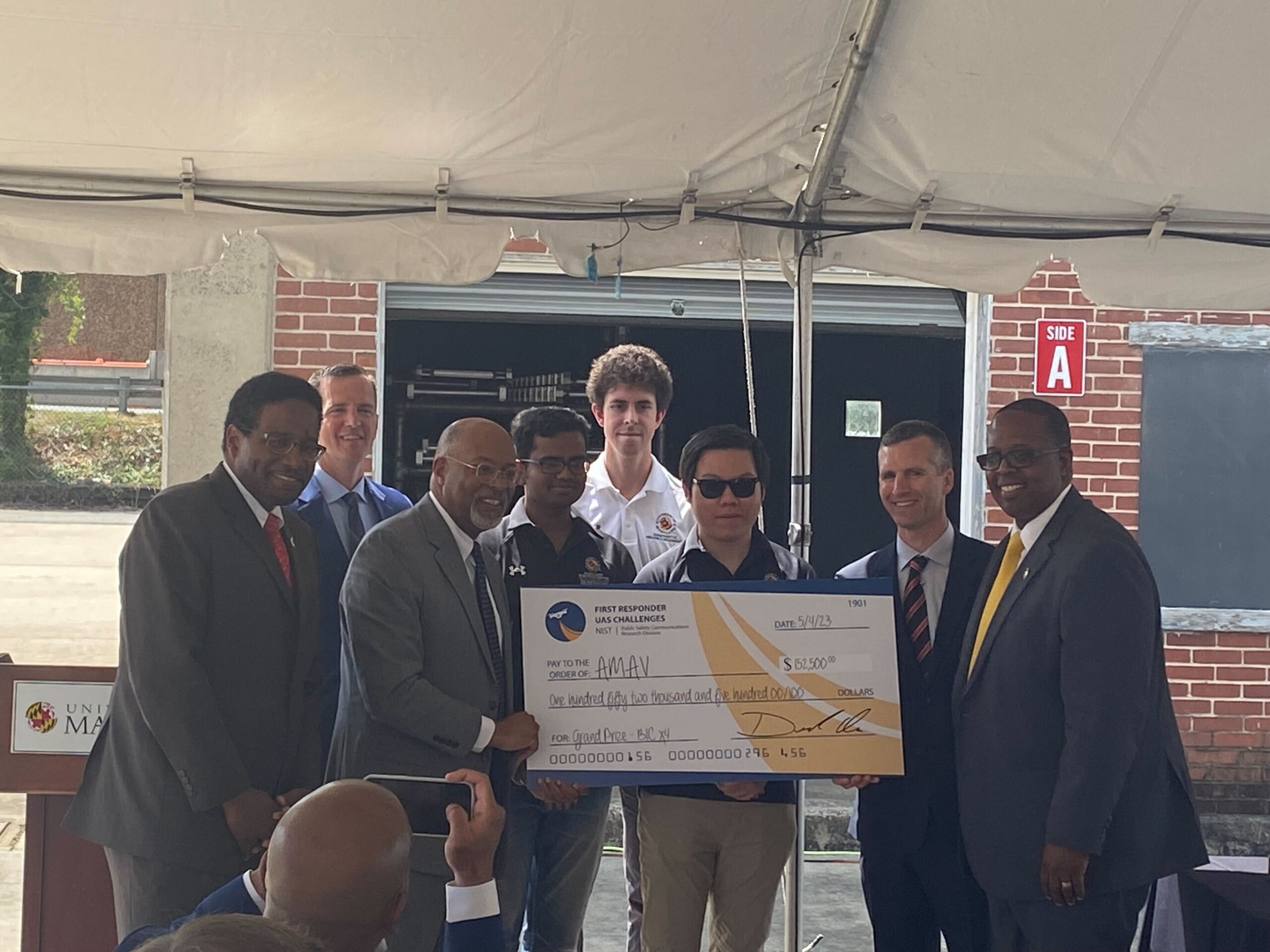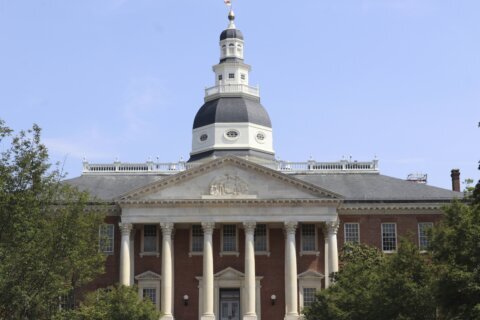This video is no longer available.
University of Maryland engineering students just won a nationwide competition for a drone that meets the needs of first responders.
Earlier this year, the drone made by the students won a national competition sponsored by the National Institute of Standards and Technology.
The contest asked teams to come up with something that could search a building for survivors after an earthquake had rendered a structure unsafe.
This three-pound drone, which is about the size of a drone you might see someone flying outdoors, is made for indoor flying and does not rely on GPS to fly. It comes with sensors that stop it from bumping into something the operator can’t see through the camera. It also allows the operator to be able to communicate with a survivor inside the building, while they remain outside.
It’s not hard to imagine using it in certain situations, such as fires or even an attack.
“This technology is really meant to save lives,” said Derek Paley, the director of the Maryland Robotics Center. “We believe that one day, these drones will be commonplace. First responders will have these drones and have the ability to investigate the interior of buildings in advance of going into dangerous conditions.”
The drone could have a practical and lifesaving impact during natural disasters — from hurricanes to wildfires.
“Dangers like house fires or wildfires that are climate driven are ways in which technology can possibly offer solutions to help save lives,” said University of Maryland President Darryll Pines. “This is an example of the use of technology, the use of drones as a means to help first responders find individuals in a building … that we don’t want to put them in harm’s way.”

The students who built the drone also collected prize money worth more than $150,000 for their efforts, even as they competed with private sector companies in the competition. The school boasted that first responders who were at the competition were also ready to buy the drone right then and there.
“A lot of what we have integrated into the drone, they don’t have in one package,” said Qingwen Wei, who led the team from Maryland in the competition. “Sometimes it would take multiple drones, or they would have to do their own modifications that might not be the most robust to get the whole system that we provide.”
At a cost of less than $5,000, Prince George’s County Fire/EMS Chief Tiffany Green said that it was easy to see why the demand will be there whenever it’s ready to go to market.
“This is amazing,” said Green. “Every single day we’re risking our lives. This gives us an opportunity to send a piece of equipment inside of a building that prevents me from putting a firefighter in danger. Anytime I can do that, I’m always excited about that.”
Green said her department has already been exploring the use of drones and looked forward to teaming up with the university to create a drone that does the work.
They were also given a proclamation from State Rep. Glenn Ivey, whose district includes areas of Prince George’s and Montgomery counties.
“We’ll never know how many lives you save by the invention you’ve made, but I guarantee you today that you will save lives with what you’ve done,” Ivey said. “And the United States thanks you, on behalf of the Congress, people here in the region. And go Terps!”








